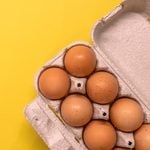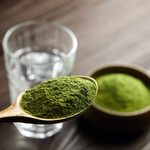Eat To Lose Weight
Want to lose weight? You may think the answer is simply to eat less. Wrong. The solution is all in the eating.
If you can manage to ignore the siren song of ever-present vending machines and fast-food joints, there’s good news: You can eat enough to feel full, without taking in too much fat or too many calories.
In a study of 38 common foods, researchers found that high-protein and high-fibre foods were much more satisfying than high-fat foods. Cakes, cookies and other fatty foods were the least satisfying, which may account in part for why you end up gobbling down such big portions when you eat them.
If you really want to enjoy what you’re eating, focus on flavourful-and above all, filling-foods. Enjoy fibre- and nutrient-rich whole grain rice, tabbouleh salad and vegetable soup instead of nutrient-stripped white rice or bagels, fat-filled potato salad or cream or corn soup. Losing weight doesn’t mean going hungry, it means eating well.
Breakfast
Skipping breakfast is like skipping rope: neither gets you anywhere. Although lots of people think they’ll cut calories by cutting breakfast, the opposite is true. Studies show that eating breakfast helps you consume fewer total calories for the day.
Whole Grain, Fruit and Other High-Fibre Foods
Eat a bowl of brown rice topped with chickpeas and sautéed vegetables for lunch, and it’s likely you won’t want another bite until supper. High-fibre foods like these have few calories, little fat and lots of bulk, which keeps you full.
Aim for: 25 to 35 g of fibre per day. A cup of chickpeas has about 7 g and ½ cup of bran cereal has more than 8 g.
Fresh Greens and Raw Veggies
Head for the salad bar. Greens and raw vegetables like carrots, zucchini and broccoli are remarkably low in calories but high in water and slow-digesting fibre, so they tend to fill you up. Researchers have found that people who eat a vegetarian diet weigh and average of three to 20 percent less than meat eaters.
Aim for: five to six servings of greens and other nonstarchy vegetables per day.
Fish, Meats and Other High-Protein Foods
Getting enough protein when you’re dieting helps you lose fat, not muscle. A study by British researchers shows that high-protein foods help trigger the release of a hormone that reduces hunger.
Aim for: a good source of protein at every meal. Women should get at least 165 g of protein a day and men 190 g or about 20 percent of daily calories.
Nuts
Researchers believe that the healthy fat in nuts helps people feel full, and the protein may use up the calories as it digests.
Aim for: 30 g or a small handful a day, in place of a high-carb snack.
Dairy Products and Other High-Calcium Foods
Here’s a reason to drink milk your mom didn’t know about: It may help you lose weight. Calcium may play a part in how fat is broken down and stored. The more calcium in a fat cell, the more fat it burns.
Aim for: 1,000 to 1,200 mg daily, about the equivalent of one cup of yogurt plus two cups of skim milk.
Eggs
Start your day sunny side up. A single egg has 6 g of high-quality protein and 14 essential nutrients, such as zinc, iron and vitamins A, D, E and B12. Best of all, it contains only 85 calories. And since eggs are high in protein, it makes sense that they keep you full.
Aim for: three or four eggs per week.



